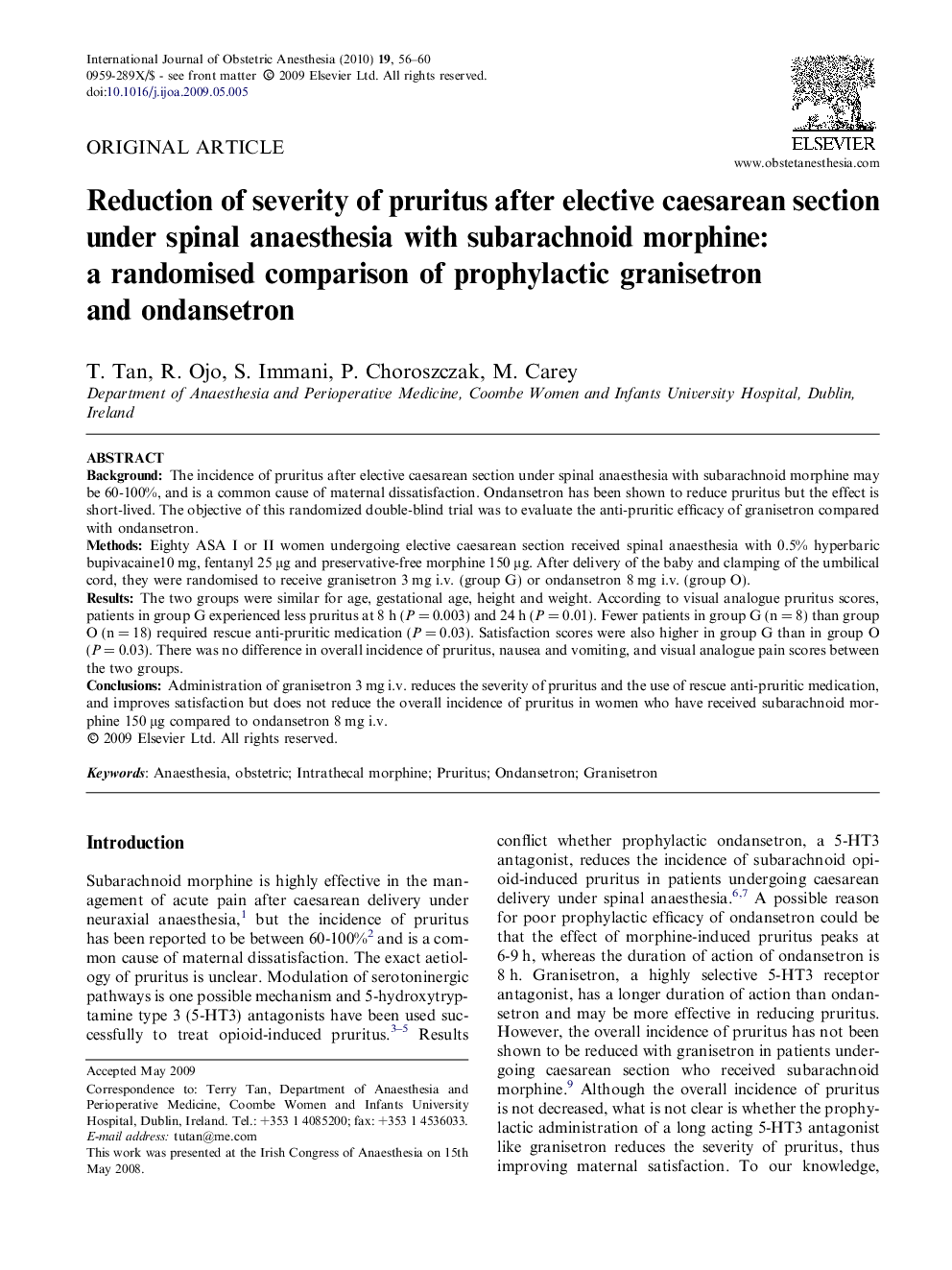| Article ID | Journal | Published Year | Pages | File Type |
|---|---|---|---|---|
| 2758287 | International Journal of Obstetric Anesthesia | 2010 | 5 Pages |
BackgroundThe incidence of pruritus after elective caesarean section under spinal anaesthesia with subarachnoid morphine may be 60-100%, and is a common cause of maternal dissatisfaction. Ondansetron has been shown to reduce pruritus but the effect is short-lived. The objective of this randomized double-blind trial was to evaluate the anti-pruritic efficacy of granisetron compared with ondansetron.MethodsEighty ASA I or II women undergoing elective caesarean section received spinal anaesthesia with 0.5% hyperbaric bupivacaine10 mg, fentanyl 25 μg and preservative-free morphine 150 μg. After delivery of the baby and clamping of the umbilical cord, they were randomised to receive granisetron 3 mg i.v. (group G) or ondansetron 8 mg i.v. (group O).ResultsThe two groups were similar for age, gestational age, height and weight. According to visual analogue pruritus scores, patients in group G experienced less pruritus at 8 h (P = 0.003) and 24 h (P = 0.01). Fewer patients in group G (n = 8) than group O (n = 18) required rescue anti-pruritic medication (P = 0.03). Satisfaction scores were also higher in group G than in group O (P = 0.03). There was no difference in overall incidence of pruritus, nausea and vomiting, and visual analogue pain scores between the two groups.ConclusionsAdministration of granisetron 3 mg i.v. reduces the severity of pruritus and the use of rescue anti-pruritic medication, and improves satisfaction but does not reduce the overall incidence of pruritus in women who have received subarachnoid morphine 150 μg compared to ondansetron 8 mg i.v.
